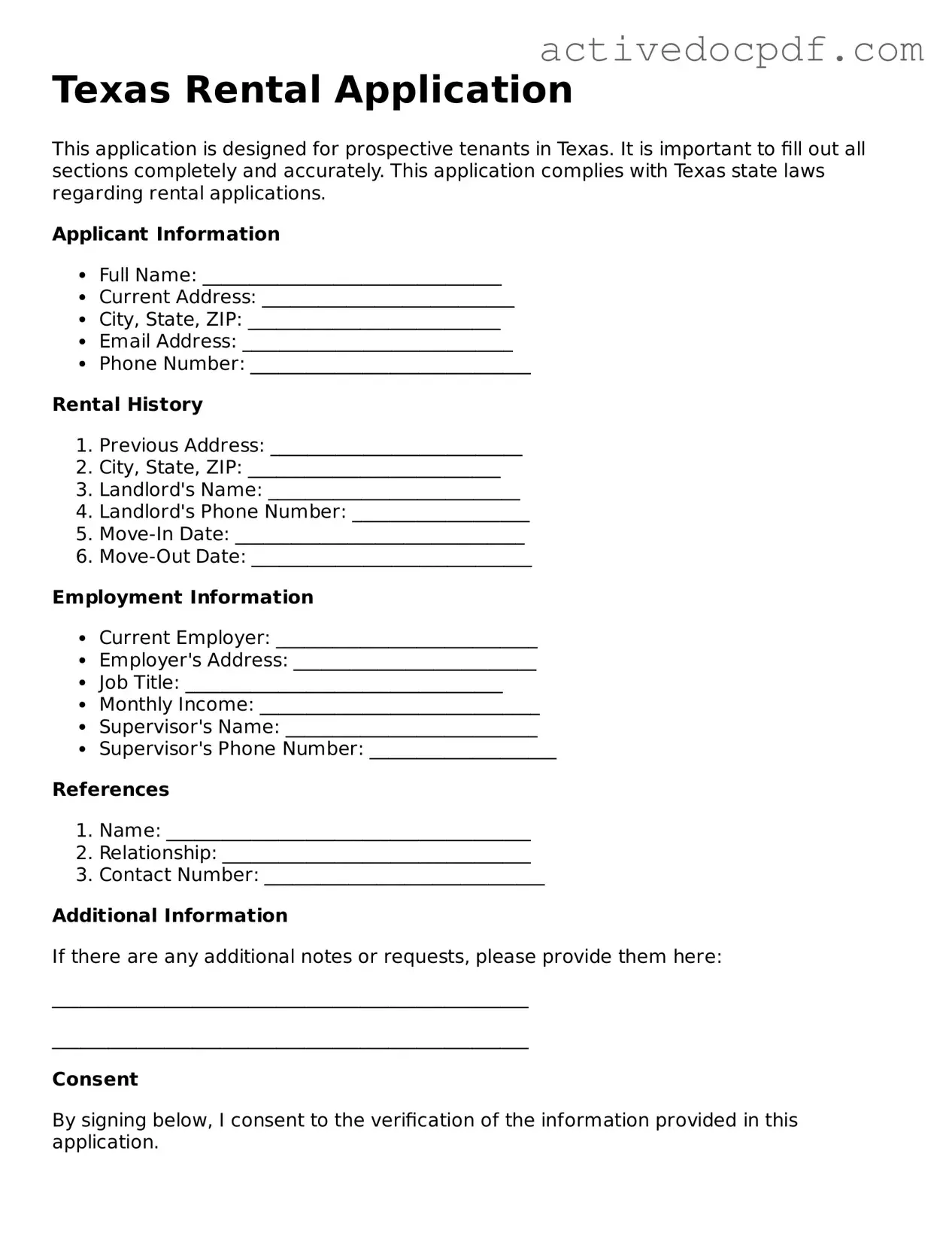A Texas Rental Application form is a document that potential tenants fill out when applying to rent a property. This form collects essential information about the applicant, including personal details, rental history, employment information, and references. Landlords use this information to assess the suitability of applicants for their rental properties.
Most Texas Rental Application forms require the following information:
-
Personal Information:
Name, address, phone number, and email.
-
Rental History:
Previous addresses, landlord contact information, and duration of stay.
-
Employment Information:
Current employer, job title, salary, and length of employment.
-
Financial Information:
Income sources, bank details, and credit history.
-
References:
Contact information for personal or professional references.
Additional details may be requested, such as Social Security numbers or background check consent.
How is the application processed?
Once submitted, the landlord or property manager reviews the application. They may conduct background checks, verify employment, and contact previous landlords. This process typically takes a few days, but it can vary based on the landlord's policies and the volume of applications received.
Is there a fee associated with the application?
Yes, many landlords charge a non-refundable application fee. This fee covers the costs of processing the application, including background checks and credit reports. The amount can vary, so it's essential to ask the landlord about their specific fee structure before applying.
What happens if my application is denied?
If your application is denied, the landlord is required to provide a reason. Common reasons for denial include poor credit history, insufficient income, or negative rental history. You have the right to request a copy of the report used in the decision-making process. Understanding the reason for denial can help you address issues for future applications.
